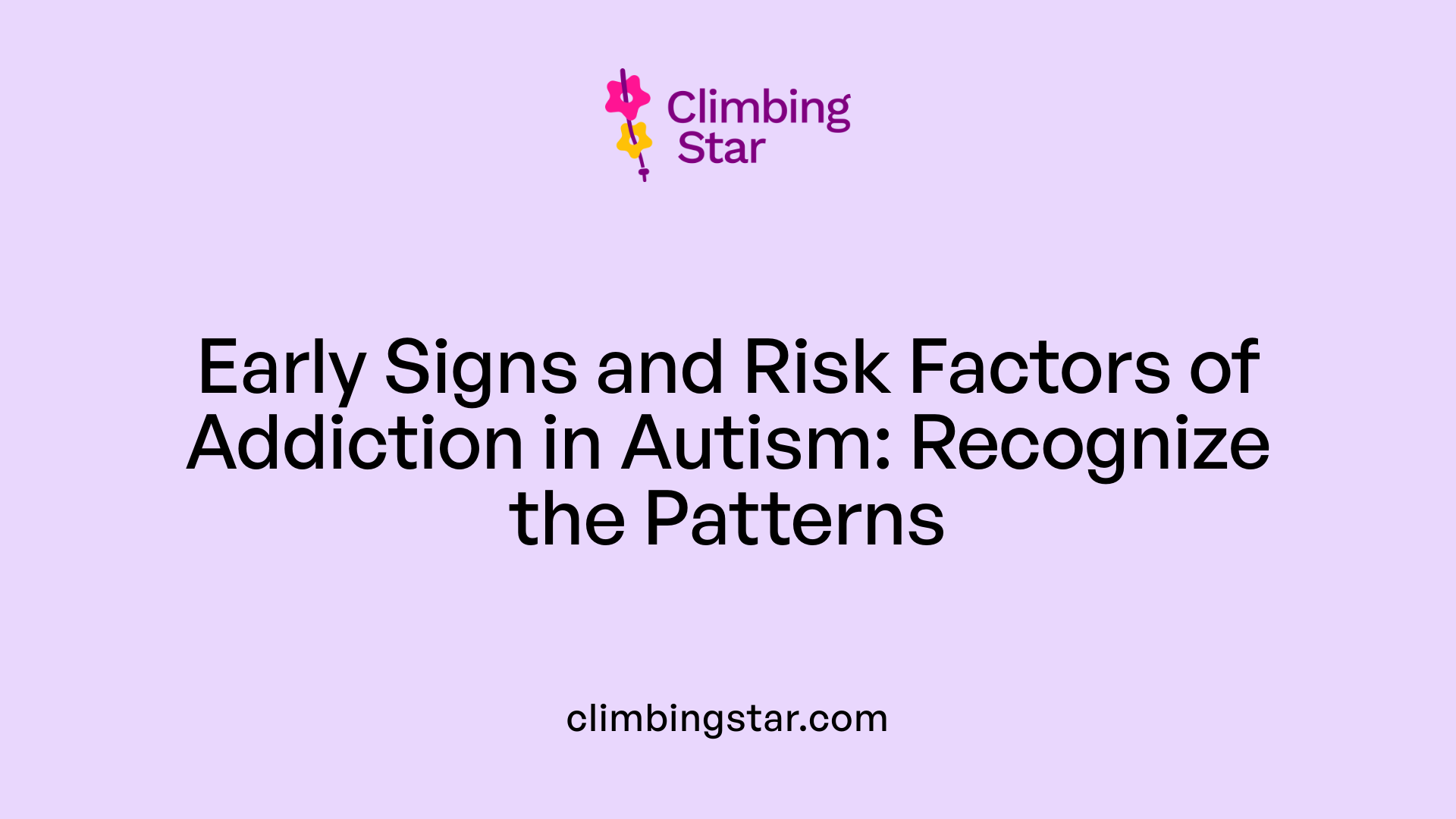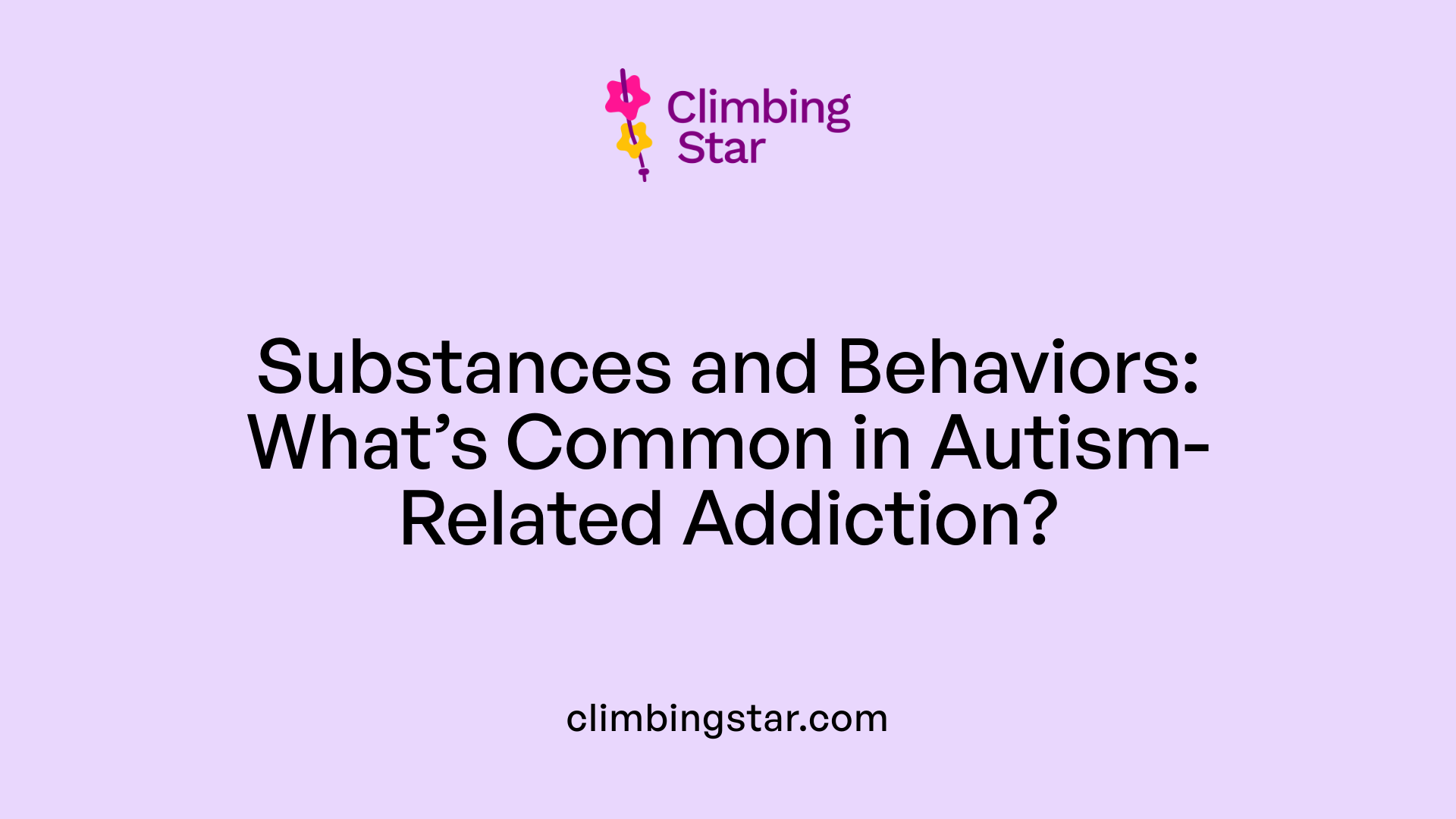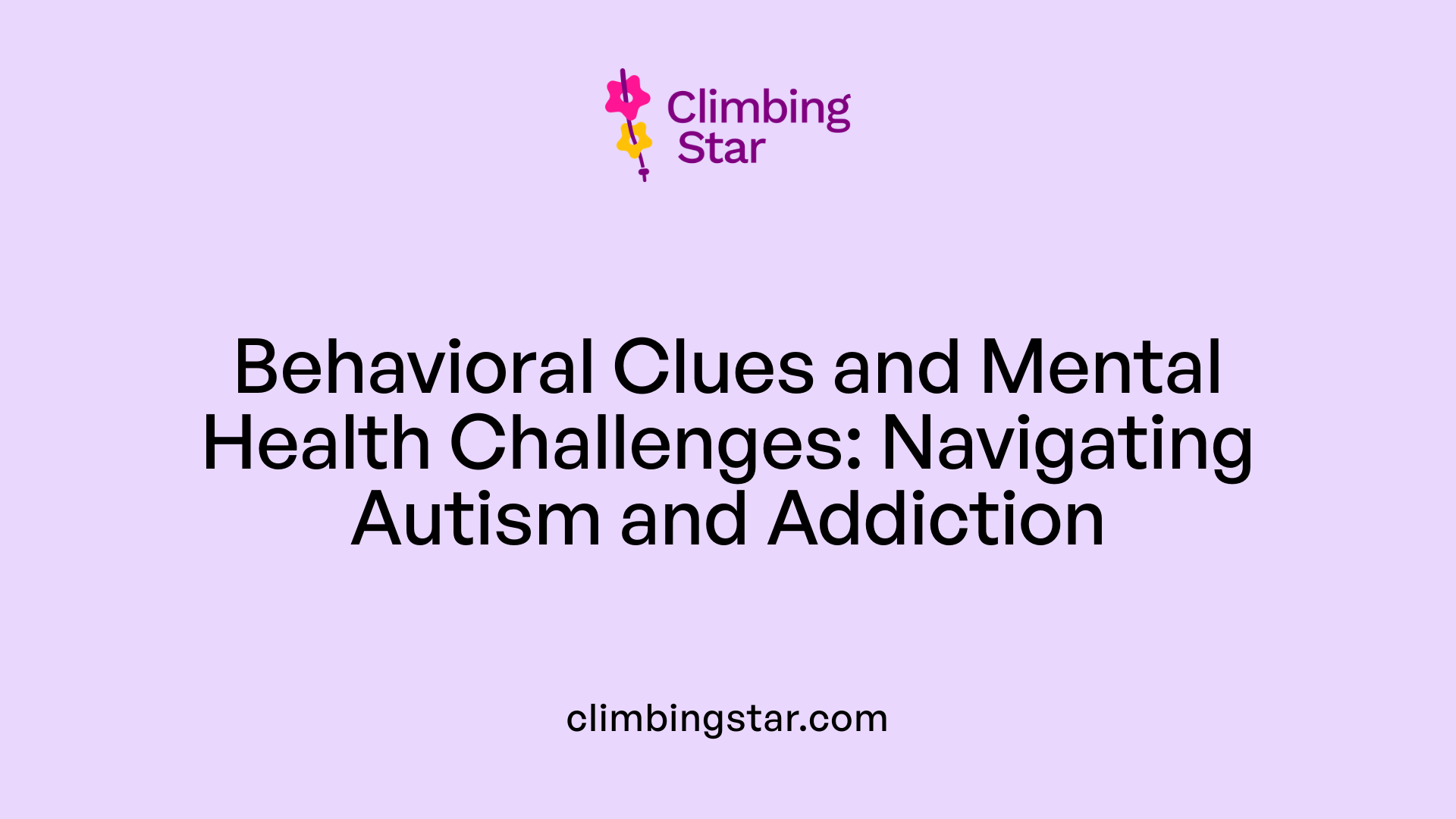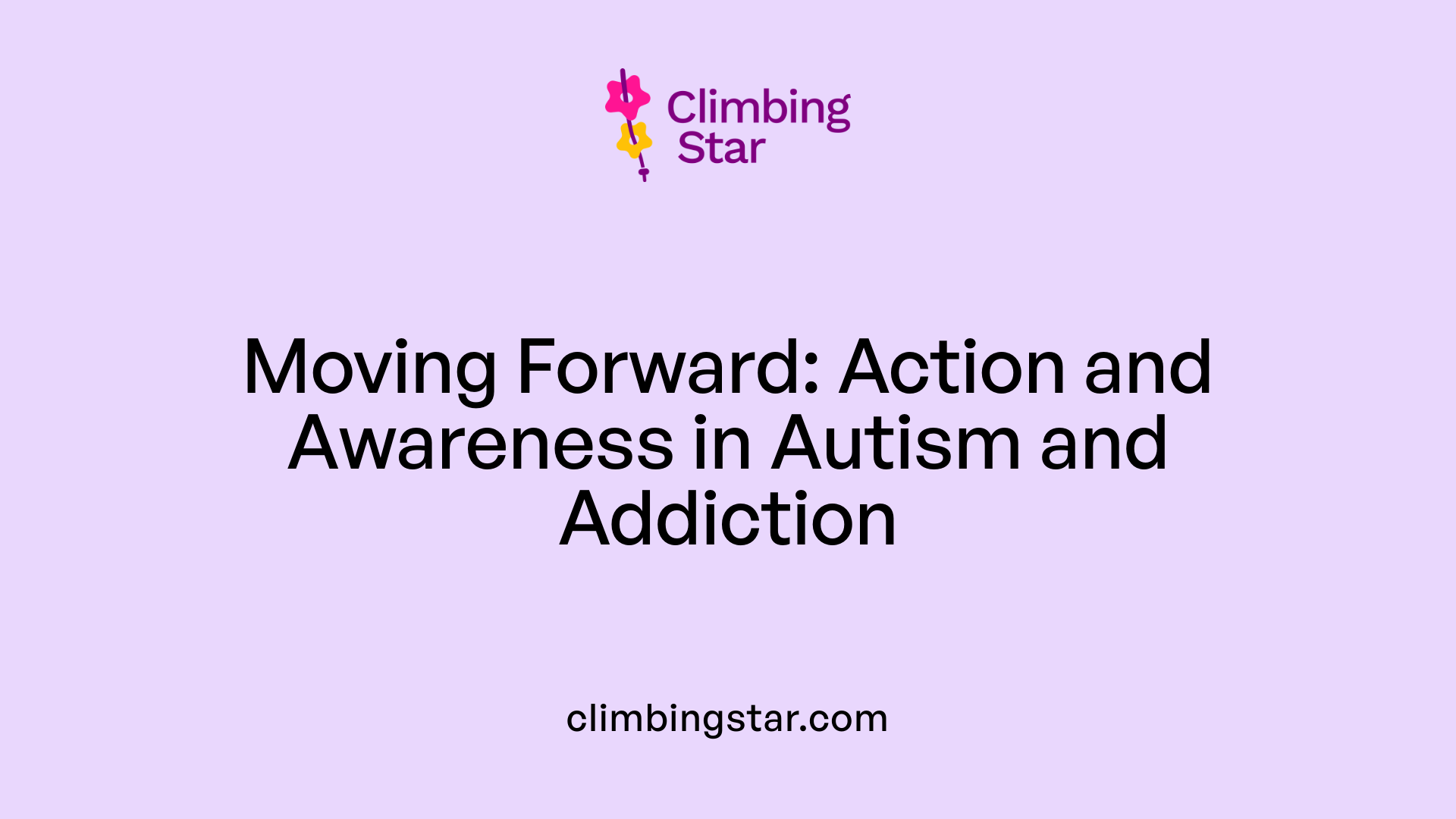Introduction to Autism and Addiction
The intersection of autism spectrum disorder (ASD) and addiction has garnered increasing attention from researchers, clinicians, and policymakers. While historically viewed as separate domains, emerging evidence underscores a significant overlap, revealing that autistic individuals are more susceptible to both substance use disorders and behavioral addictions. This article explores the nuanced relationship between autism and addiction, examining risk factors, behavioral patterns, underlying scientific findings, and effective treatment strategies. A comprehensive understanding of this connection is crucial for developing tailored interventions that address the unique needs of autistic individuals, ultimately fostering better health outcomes.
Understanding the Risk Factors and Early Signs of Addiction in Autism

What are the risk factors and signs of addiction in individuals with autism?
People with autism face a higher likelihood of developing addiction problems compared to their neurotypical peers. This increased risk is linked to several interconnected factors.
Genetics and co-occurring mental health disorders play a significant role. Conditions like anxiety, depression, Obsessive-Compulsive Disorder (OCD), and Attention Deficit Hyperactivity Disorder (ADHD) often coexist with autism, making individuals more susceptible to self-medicating with substances such as alcohol, marijuana, opioids, or stimulants.
Sensory processing issues and social difficulties are also important contributors. Many autistic individuals experience sensory overload or find social interactions exhausting. They might turn to addictive behaviors like internet gaming, gambling, or compulsive shopping as coping mechanisms.
Behavioral changes are key early indicators of developing addiction. Noticeable signs include increased irritability, withdrawal from social activities, unexplained injuries, physical health issues, or risky behaviors. Friends or family might observe sudden shifts in behavior such as increased risky choices, financial problems, or social withdrawal.
Additional signs include
- Behavioral fluctuations
- Increased risky or impulsive actions
- Changes in physical appearance
- Financial or social difficulties
Given the complex nature of autism, these signs should prompt careful assessment and tailored intervention strategies. Recognizing these early warning signals allows for more effective management and support, helping prevent addiction from worsening.
| Risk Factors | Associated Signs | Potential Behaviors |
|---|---|---|
| Genetics and co-occurring neurodivergence | Withdrawal from social and family activities | Impulsivity and risky decision-making |
| Sensory processing challenges | Behavioral swings and irritability | Excessive internet or gaming use |
| Social difficulties and isolation | Unexplained injuries or physical signs | Substance misuse for self-medication |
| Environmental factors and peer influence | Financial problems and social withdrawal | Use of substances or behaviors to mask autism traits |
Identifying these factors through observation and professional evaluation is crucial. Early detection and intervention are essential for supporting autistic individuals in managing and overcoming potential addiction issues.
Substances and Behaviors Commonly Associated with Autism-Related Addiction

Which substances and behaviors are most commonly associated with addiction in individuals with autism?
Research indicates that autistic individuals are at a higher risk of developing both substance use disorders and behavioral addictions compared to neurotypical populations. These rates can be up to twice as high, highlighting a significant concern in mental health and healthcare.
Among the substances most commonly involved are alcohol, marijuana, nicotine, stimulants like amphetamines, opioids, LSD, magic mushrooms, heroin, and cocaine. Many take these substances to self-medicate, aiming to manage anxiety, depression, and emotional regulation difficulties.
Behavioral addictions are also prevalent, with internet gaming, gambling, and compulsive shopping being the most reported. These behaviors often serve as coping mechanisms, driven by obsessive tendencies, hyper-fixation, sensory overstimulation, and social stresses that are characteristic of autism.
Autistic individuals may use alcohol and marijuana specifically to ease social interactions or reduce social anxiety. Some engage in self-medicating behaviors to escape emotional distress, trauma, or sensory overload. Factors such as sensory sensitivities, co-occurring conditions like ADHD and anxiety disorders, and barriers to accessing tailored treatment further increase their vulnerability.
Prevention and intervention strategies need to consider these unique risks, emphasizing tailored support approaches to reduce the incidence of addiction and improve outcomes for autistic individuals.
The Intricate Connection Between Autism and Addiction
What is the relationship between autism and addiction?
Research shows a closer link between autism spectrum disorder (ASD) and addiction than previously understood. Autistic individuals are more likely to develop both substance use disorders (SUDs) and behavioral addictions such as internet overuse, gaming, and compulsive eating.
Studies suggest that up to 36% of autistic adults experience some form of substance misuse, including alcohol, marijuana, cocaine, amphetamines, and hallucinogens. Notably, autistic adults are nearly nine times more likely to use recreational drugs to manage unwanted symptoms like anxiety or sensory overload compared to non-autistic peers.
The connection is partly due to shared characteristics such as impulsivity, obsessive behaviors, and sensory processing differences. These traits may drive some to seek relief through substances to soothe overwhelming emotions or sensory inputs.
Many autistic individuals turn to drugs or addictive behaviors as self-medication to cope with social anxiety, mental health issues like depression, or the challenges of camouflaging their autism in social settings. It’s also generally observed that those with undiagnosed autism might be at higher risk due to a lack of tailored support.
Supporting this, research indicates that about 20% of young adults treated for addiction show symptoms of autism, and vice versa—many with autistic traits go undiagnosed despite exhibiting signs of substance use disorder.
Effective treatment strategies recognize the importance of understanding each individual’s needs, emphasizing therapies adapted for sensory sensitivities and communication barriers. Support systems that consider these special needs are crucial to preventing and managing addiction in the autistic community.
Digital Media Overuse and Autism: A Growing Concern
How does digital media addiction relate to autism?
Autism Spectrum Disorder (ASD) is linked to a higher risk of overusing digital media and developing related addictions. Autistic individuals often turn to online platforms, gaming, and social media due to their preference for predictability and control. These environments provide a safe and structured space that reduces anxiety and sensory overload.
Many use digital media as an escape from social stress and sensory challenges, which are common in daily life. For instance, digital platforms offer predictable routines and intense interests, making them particularly comforting.
However, excessive digital media use can lead to several risks. This includes social withdrawal, emotional dysregulation, physical health decline, and interference with language and cognitive growth. Research indicates that autistic individuals are more susceptible to developing problematic internet use, gaming disorder, and social media issues compared to neurotypical peers.
Studies reviewed in Science Direct show a growing concern about excessive gaming and internet use among those with autistic traits. Contributing factors include sensory-seeking behaviors, social difficulties, and the calming effects digital media provides.
Effective approaches to address this issue involve tailored interventions. Cognitive Behavioral Therapy (CBT), applied behavior analysis, structured digital detoxes, social skills training, and family support are all part of comprehensive treatment strategies. Structured screen time management helps minimize potential negative impacts while supporting healthier digital habits.
Overall, understanding and managing digital media overuse in autism is crucial to preventing social, emotional, and health-related problems. Targeted therapies and supportive environments can help autistic individuals develop balanced digital media usage and enhance their quality of life.
Behavioral Patterns and Mental Health Issues in Autism and Addiction

How are behavioral patterns and mental health issues associated with autism and addiction?
Autistic individuals often display repetitive behaviors and social withdrawal, which are characteristic of Autism Spectrum Disorder (ASD). These behaviors can create a sense of predictability and control, helping individuals cope with sensory overload and social anxiety. However, they can also increase vulnerability to addictive behaviors, such as excessive internet use, gaming, or gambling. These behaviors may serve as outlets to manage distress or seek comfort.
Many autistic people experience co-occurring mental health conditions like anxiety, depression, and emotional dysregulation. These issues can amplify the risk of developing addiction, as individuals may turn to substances or compulsive behaviors to self-medicate. For example, alcohol or drugs might be used to reduce social anxiety or alleviate feelings of depression, creating a cycle of dependence.
Research suggests a strong link between mental health problems and addiction in autism. The relationship is complex, with behavioral patterns influenced by underlying psychiatric conditions. Autistic individuals may use substances to manage overwhelming emotions, sensory sensitivities, or mental health symptoms, which can further hinder social functioning and emotional stability.
This interconnectedness highlights the importance of tailored treatment approaches that address both mental health issues and addictive behaviors. Interventions like cognitive-behavioral therapy adapted for autism, family involvement, and sensory-friendly environments are crucial in supporting individuals through recovery.
| Behavioral Aspects | Common Mental Health Issues | Relation to Addiction | Additional Notes |
|---|---|---|---|
| Repetitive behaviors | Anxiety, depression | Serve as self-medication | Help in coping sensory overload |
| Social withdrawal | Emotional dysregulation | Increase risk of dependency | Often lead to social isolation |
| Rigid routines | Stress from change | Can lead to compulsive behaviors | Designed to reduce uncertainty |
| Sensory overload | Mood swings | May trigger addictive acts | Overstimulation can push towards digital media use |
Understanding these patterns is essential for developing effective interventions that can break the cycle between behavioral issues, mental health problems, and addiction, improving overall well-being for autistic individuals.
Treatment Strategies for Co-Occurring Autism and Addiction
What are effective treatment options and interventions for individuals with both autism and substance use issues?
Treating individuals who have autism along with addiction requires a tailored approach that considers the unique sensory, communication, and social needs of autistic individuals. One effective intervention is adapted cognitive-behavioral therapy (CBT). This form of therapy incorporates psychoeducation, social skills training, and support for daily life organization. It is modified to accommodate sensory sensitivities and communication styles typical in autism, which helps improve engagement and effectiveness.
Medication management is often necessary to address co-occurring mental health conditions such as anxiety or depression. These conditions can significantly influence substance use behaviors, so appropriate medications and close monitoring are vital.
Integrated treatment programs combine behavioral therapies with vocational rehabilitation and life skills training. This comprehensive approach aims to improve not only substance use outcomes but also overall functioning and independence.
Supportive environments play an essential role. Using visual aids, explicit instructions, and creating sensory-friendly settings can help maintain motivation, reduce anxiety, and encourage participation.
Screening for autism traits in addiction treatment settings and training clinicians in autism-specific approaches are crucial steps to improve care quality. Personalizing interventions based on individual needs leads to better engagement and more successful recovery outcomes.
Current Status and Future Directions in Autism and Addiction Research
What does current scientific research say about autism and addiction?
Recent studies reveal that autistic individuals are more prone to substance use issues compared to the general population. Prevalence rates vary significantly across research, ranging from as low as 0.7% to as high as 36%. In particular, up to one-third of autistic adults may experience an alcohol or other substance use disorder (AUD/SUD). These individuals are nearly twice as likely to develop substance-related problems, often using drugs or engaging in addictive behaviors as a way to cope with challenges such as social anxiety, sensory overload, and mental health symptoms like anxiety or depression.
Research also highlights that many autistic people resort to substances like alcohol, marijuana, cocaine, and even gambling to mitigate internal struggles or navigate social difficulties. Autistic individuals often self-medicate to manage sensory sensitivities or emotional exhaustion, which can compromise their overall health and daily functioning. Interestingly, some research suggests that in general, autistic individuals may report lower overall substance use than neurotypical populations; however, the use that does occur tends to be motivated by the desire to alleviate specific internal symptoms or social stressors.
Despite these findings, the scientific community emphasizes that there is still limited literature explicitly focusing on the connection between autism and addiction. This gap hampers the development of effective screening tools, targeted interventions, and informed policymaking. Importantly, recognizing the complex interplay of neurological, psychological, and environmental factors influencing this relationship is crucial for fostering comprehensive support structures.
In summary, current research underscores the importance of increasing awareness, improving screening processes, and designing tailored intervention strategies to address the elevated risk of addiction among autistic individuals. Strengthening the evidence base will enable better prevention and treatment pathways, ultimately improving health outcomes and quality of life for this vulnerable population.
Concluding Remarks and Calls for Action
 The link between autism and problematic substance use underscores an urgent need for dedicated research, policy development, and tailored clinical practices. Current literature is limited, hindering effective interventions and support services for autistic individuals facing addiction. To address this, increased funding and focus are essential to understand the unique pathways leading to substance misuse in this population.
The link between autism and problematic substance use underscores an urgent need for dedicated research, policy development, and tailored clinical practices. Current literature is limited, hindering effective interventions and support services for autistic individuals facing addiction. To address this, increased funding and focus are essential to understand the unique pathways leading to substance misuse in this population.
Reducing stigma around autism and addiction is crucial for early diagnosis and compassionate care. Expanding access to specialized services, including therapies like cognitive-behavioral therapy adapted for autism, can significantly improve outcomes. Early intervention and ongoing support are vital in preventing the escalation of addictive behaviors and mitigating their impact on mental health.
Looking ahead, future research should explore innovative strategies such as digital media management, integrated treatment approaches, and community-based support systems. Developing comprehensive policies that recognize the intersection of autism and addiction will enable more effective resource allocation. Ultimately, a collaborative effort among researchers, clinicians, policymakers, and the community is needed to enhance understanding, reduce risks, and foster recovery for autistic individuals affected by addiction.
Final Thoughts: Bridging Gaps to Better Support
Understanding the intricate relationship between autism and addiction highlights the necessity for comprehensive, tailored approaches in prevention, diagnosis, and treatment. As research continues to unveil the neurobiological and behavioral underpinnings of this connection, it becomes imperative for health systems, policymakers, and clinicians to prioritize specialized training, increase awareness, and develop integrated services. Early identification of at-risk individuals, alongside innovative interventions and supportive environments, can significantly improve quality of life for autistic persons facing addiction challenges. Concerted efforts to reduce stigma and enhance access to appropriate care are essential steps toward ensuring that this vulnerable population receives the understanding, respect, and support they deserve.
References
- Identifying the most important research, policy and practice ...
- Autism And Addiction: Signs, Risk Factors, and Treatment
- Autistic individuals may be more likely to use recreational ...
- Autism and Addiction: Is There a Link?
- Autism and addiction | Mental Health | UKAT
- The Link Between Autism and Digital Media Addiction
- Behavioral addiction and autism spectrum disorder
- Behavioral addiction and autism spectrum disorder
- Patients With Autism Spectrum Disorder and Co-occurring ...







